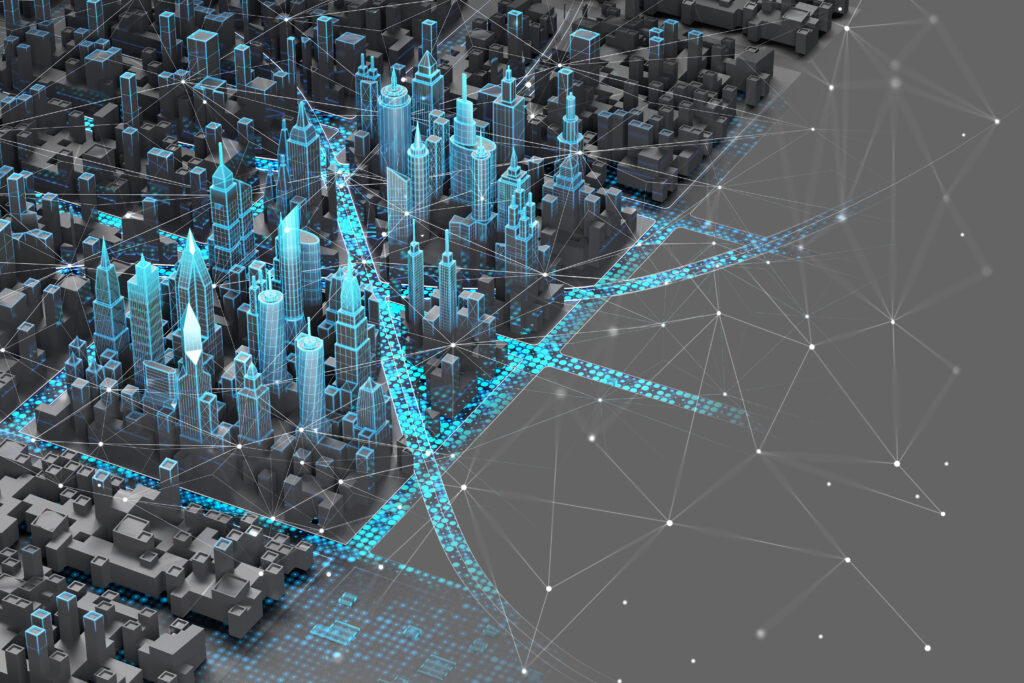Pillar 2 – Connecting Cities with the Virtual and Real Worlds

Pillar 2 – Connecting Cities with the Virtual and Real Worlds translates strategic vision into real-world experimentation. It empowers cities to lead the development of AI-powered virtual worlds by integrating emerging technologies, identifying high-impact use cases, and providing tools and environments for hands-on innovation.
Through five practical tracks, this pillar enables urban stakeholders to explore, test, and apply virtual world solutions—bridging the gap between ambition and implementation, and helping shape the citiverse from the ground up.
Track 7
This track aims to explore the transformative potential of emerging technologies, such as AR, VR, digital twins and AI within the context of virtual worlds. It focuses on their application and adoption in cities, aiming to uncover innovative solutions for cities. By staying current on technological developments, this track serves as a dynamic resource for providing current insights into the technologies propelling the evolution of virtual worlds including citiverse. Moreover, it serves as a platform to highlight both the challenges and opportunities intrinsic to these technologies as they intersect with the expanding realm of the virtual worlds.
Track 8
This track focuses on the collection and curation of new use cases pertaining to virtual worlds, including the adoption of digital technologies, such as AI, VR, AR, digital twin in cities. The track highlights the expected opportunities, risks, and maturity/horizon associated with the use cases identified.
Track 2
This track focuses explicitly on security and trust in the citiverse and virtual worlds. As the virtual worlds involving, a range of security and trust issues emerge. Addressing these concerns is critical to fostering a safe and reliable virtual worlds and citiverse.
Track 16
The track focuses on interoperability challenges related to the Citiverse. Interoperability in relation to immersive technologies, AI and virtual worlds in the context of local and regional authorities and communities will be discussed in all its aspects, both on the technical (semantic and technical) and the non-technical level (public service governance, legal, organisational, cultural). Best practices and use cases from cities and communities around the world will be collected for every layer of interoperability and the potential of ensuring minimal interoperability through defining a new Minimal Interoperability Mechanism (MIM, as defined in ITU-T Y.4505) will be assessed.
Track 9
This track creates a sandbox environment. This controlled space will facilitate the testing and selection of secure, interoperable, and innovative technologies related to virtual worlds in the urban context. By providing a safe space for experimentation, the sandbox expedites the adoption of cutting-edge solutions in real-world urban settings. There are 2 phases in this track: Phase I – Sandbox Experiment Facility Concept Formulation and Phase II – Sandbox Experiment Facility Implementation Track.
Track 17
This is the action-oriented track of the Global Initiative on Virtual Worlds and AI, dedicated to showcasing and scaling real-world projects driven by cities, communities, and organizations. This track highlights how immersive technologies and AI are being implemented to transform public services, urban spaces, education, mobility, cultural heritage, and citizen engagement. It provides a global stage for pilots, prototypes, and policies that are already delivering measurable impact. By focusing on local implementation and global learning, Citiverse on the Ground ensures that innovation does not remain abstract — it becomes tangible, inclusive, and aligned with the priorities of people and places.